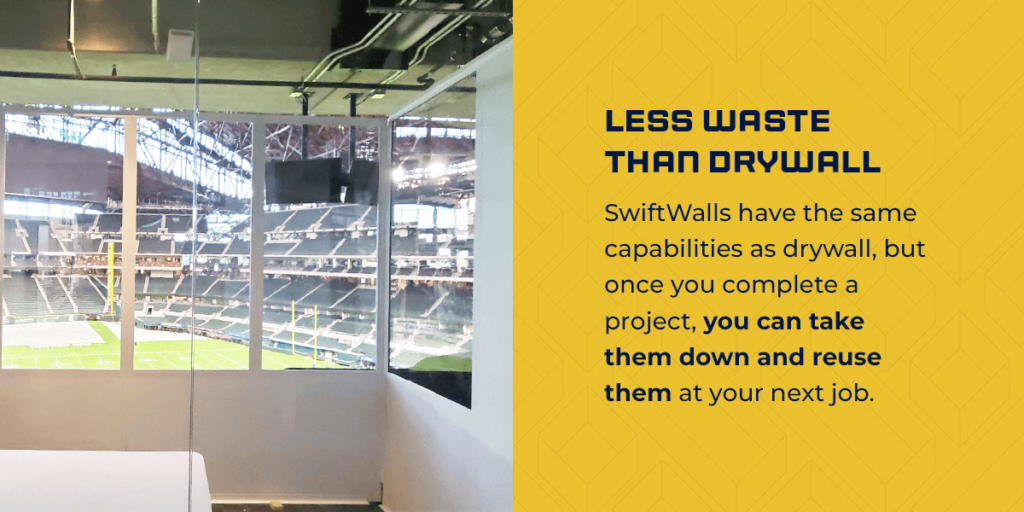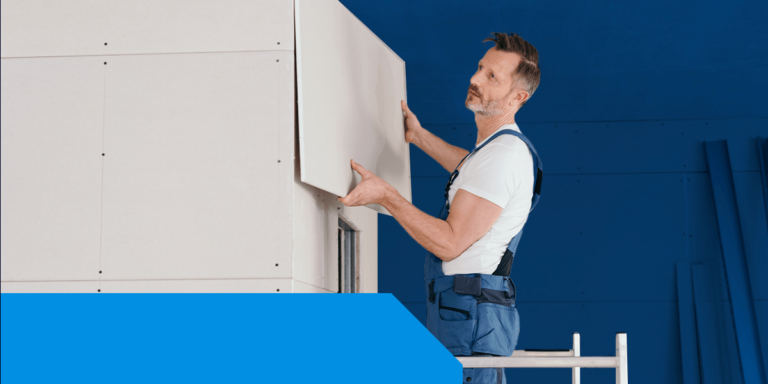Construction contributes to a significant amount of waste, and many of the materials used in construction are bad for the environment. Ideally, contractors should look for more sustainable practices to reduce their environmental footprint. The good news is there are numerous ways construction sites can make changes to increase their sustainability.
The Importance of Sustainability in Construction
In its very nature, construction uses numerous natural resources, which can significantly impact the environment. The use of these resources is why sustainability is so important in construction. The goal is to reduce the industry’s impact on the environment by utilizing methods such as:
- Reducing waste on-site.
- Using recyclable or renewable materials.
- Decreasing energy consumption.
- Lessening embodied energy for building materials.
- Protecting natural environments during and after construction.
Many traditional methods in construction have a harsh effect on the environment. Reducing carbon emissions should be the goal of every construction project, especially because the construction industry is responsible for a large percentage of the world’s total carbon emissions. Using sustainable practices can help reduce the overall impact on the environment, improve air quality, save habitats and preserve the ozone layer.
While adopting sustainable practices can’t happen overnight, there are ways you can make your construction work better for the environment. Staying up to date on sustainable methods and changing current practices can help you achieve fewer carbon emissions over time. Some factors construction contractors should consider when trying to boost sustainability include:
- Project design
- Fuel consumption
- Material selection
- Construction demolition
When these processes use traditional methods, they have the potential to create a significant amount of waste. Instead, you should consider each part of the construction process and determine where you can make changes to improve your sustainability. For example, you can choose recyclable materials for sustainable temporary walls to take a step in the right direction toward making construction sustainable.
How SwiftWall Makes Construction More Sustainable
A significant way to practice eco-friendliness on your construction site is by using SwiftWall products.
Our products can help you divide space and simplify the construction process by making it cleaner, faster and more sustainable. SwiftWall products are revolutionary in the temporary wall and construction barrier industry, providing reusable wall panel solutions for projects within numerous sectors.
Learn about how our products make construction more environmentally friendly and can help you adhere to construction sustainability best practices.
1. Less Waste Than Drywall
Many construction projects utilize drywall to divide space or create temporary structures at the job site. One of the problems with traditional drywall is that it creates a lot of waste.
Approximately 12% of drywall is wasted in new construction projects when used for temporary structures or to divide space. When the drywall is removed and disposed of once a project reaches completion, 100% of the materials are wasted, filling up landfills and negatively impacting the environment.
The difference between drywall and SwiftWall is you can reuse the SwiftWall. SwiftWalls have the same capabilities as drywall, but once you complete a project, you can take them down and reuse them at your next job. Many of our customers reuse our product at least four times, and some of our earliest customers have been able to reuse our walls 15 times.

The ability to reuse temporary walls on various projects significantly reduces the waste that traditional drywall produces, helping protect the environment while streamlining your construction processes.
2. Eco-Friendly Materials
Another way that SwiftWall helps make environmentally friendly construction practices more accessible is by utilizing eco-friendly materials. Our products are prefabricated with environmentally friendly and reusable materials. You can recycle the aluminum components of our products and reuse the other parts or return them to us so we can salvage them for new panels.
This is a significant difference from drywall, which is made from a material called gypsum. When this material is left in a landfill, it has the potential to release hydrogen sulfide, which is a poisonous gas that can pose a severe threat to anyone in the immediate area. The more drywall used in construction projects, the more likely landfills will have to manage this gas before it becomes a threat to landfill workers or passersby.
SwiftWall eliminates this risk by utilizing eco-friendly materials that can be returned to SwiftWall for salvage.
3. Air Quality Preservation
The SwiftWall can help you isolate the construction area through the use of barriers and negative pressure rooms, helping maintain the air quality outside of the worksite. Preserving air quality around a construction site is essential, whether it’s a hospital, airport or another populated location. Our products are prefabricated in a controlled environment, limiting material waste and preserving air quality.
Choosing SwiftWall can help reduce the risk of air contamination, helping keep the environment clean and your workers healthy.
4. Reducing, Reusing and Recycling
At SwiftWall, we make it a priority to focus on sustainability, applying three environmental strategies to our manufacturing processes:
- Reduce
- Reuse
- Recycle
We’re continuously looking for ways to help customers follow these strategies in a closed-loop system to improve sustainability and the environment. Our products help you reduce the materials you use on your project, and you can reuse our walls for your next job, cutting down on waste.
Request a Quote Today
If you want to make your construction practices more sustainable, look no further than SwiftWall. Our products are designed with sustainability in mind, helping transform the construction and temporary wall industry. Our walls are ideal for reconfiguring spaces, partitioning work zones and creating a designated space for construction.
You can reuse the SwiftWall after each project, reducing the need for drywall or other materials. Once the SwiftWall has reached the end of its life, you can recycle the aluminum and return the rest to us for use in new panels, helping to reduce your waste production. If you’re looking for sustainable alternatives to drywall for your next construction project, consider our range of SwiftWall projects.
Request a quote or contact us today to learn more about how our product can help revolutionize your construction site.



